Posted: October 17, 2014
Samsung Galaxy Note 4 , Galaxy Alpha, and Apple iPhone 6 Phones
Samsung released their latest 5.7inch flagship Galaxy Note 4 ahead of schedule in South Korea, and then followed it up with the release of the Samsung Galaxy Alpha in Europe. The Galaxy Alpha with its 4.7 inch display is Samsung's thinnest and first metal-framed device in their Galaxy product line to date. Both devices are the Samsung alternatives to Apple's iPhone 6 Plus and iPhone 6 phones released on September 19.
Samsung Galaxy Note 4 Exynos 5433 & Samsung Galaxy Alpha Exynos 5430
Both the Note 4 SM-N910K and Galaxy Alpha SM-G850F relied on Samsung's own Exynos application processors, the Exynos 5433 and the Exynos 5430 respectively.
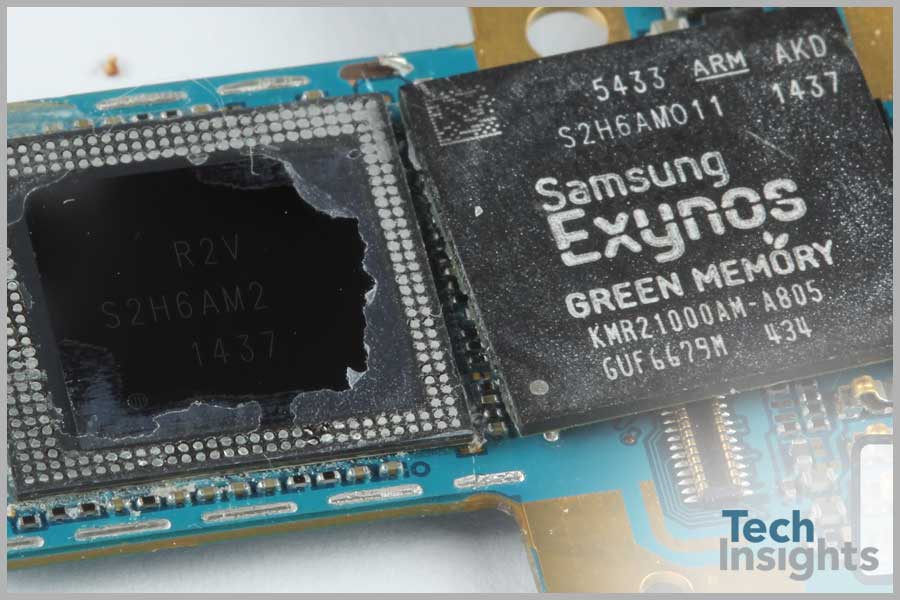
Samsung Galaxy Note 4 Exynos 5433
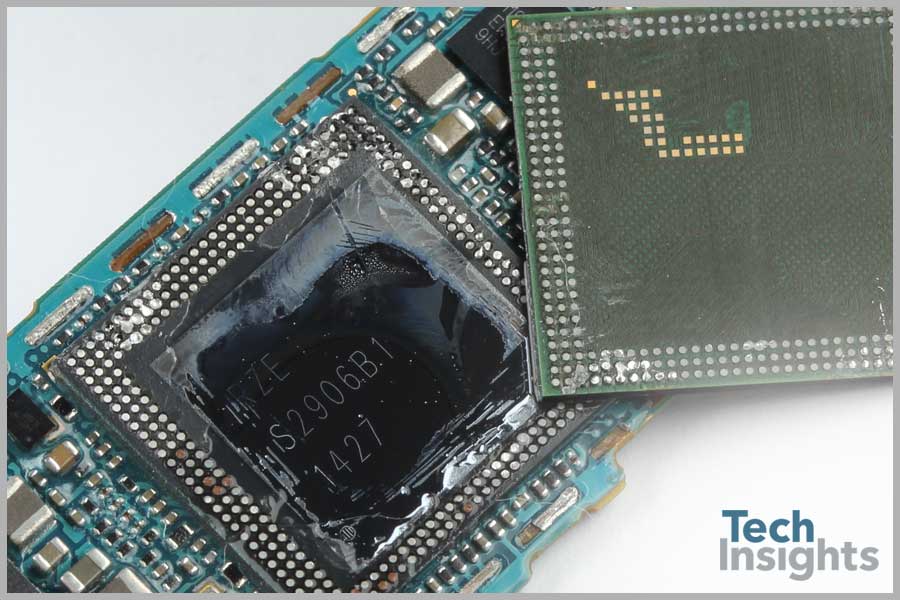
Samsung Galaxy Alpha Exynos 5430
Unlike the Apple iPhone 6 and iPhone 6 Plus devices which both used the same baseband processor, the Qualcomm MDM9525M, Samsung brings the Intel X-Gold PMB9933 XG726G into the Alpha, and Samsung’s own Shannon 303 into the Galaxy Note 4. There are rumors the basebands will be different in the models released for the US market.
In the Galaxy Note 4, Samsung used many of their Shannon chipsets to support other functions such as power management, RF, and one IC who's function we have not yet determined. TechInsights first spotted Shannon in the Samsung Galaxy Lite SGH-T399 in 2013 and again in the recently released Samsung S5 Mini SM-G800F. However in those devices, Shannon was only used for power management and the RF transceivers. With the addition of so many of the Shannon ICs in a flagship like the Galaxy Note 4, it would appear Samsung is expanding Shannon into becoming an entire design solution.
Overall, Samsung takes the majority of the design wins in the Galaxy Note 4 with the Shannon ICs and other Samsung components such as the Exynos 5433 processor. Both the Galaxy Alpha and Note 4 use S3FWRN for the NFC controller, S5C72C for image processing, as well as the Samsung memory ICs.
Samsung Galaxy Note 4 Board Shots
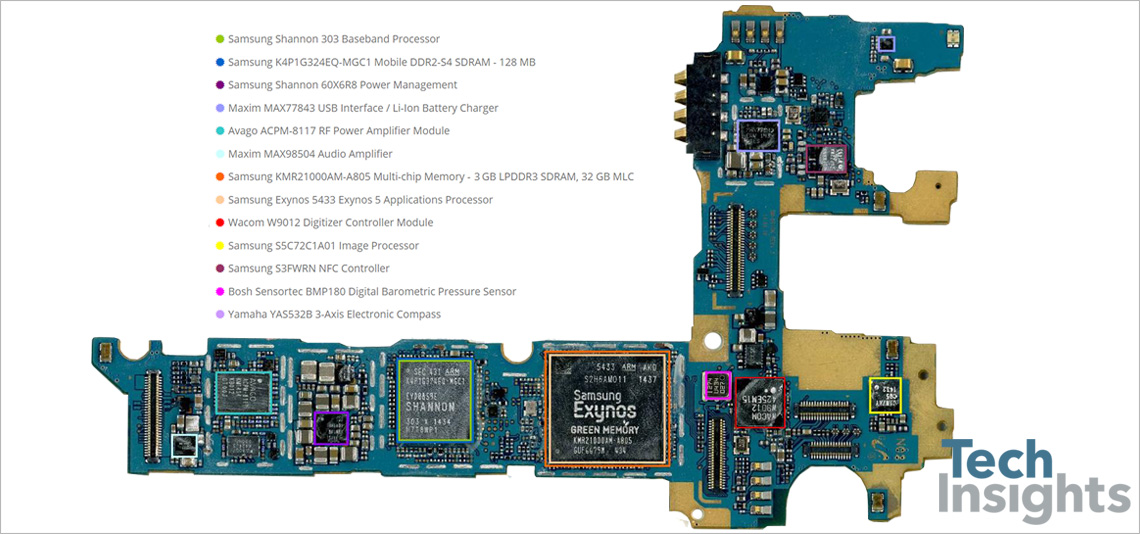
Samsung Galaxy Note 4 Board
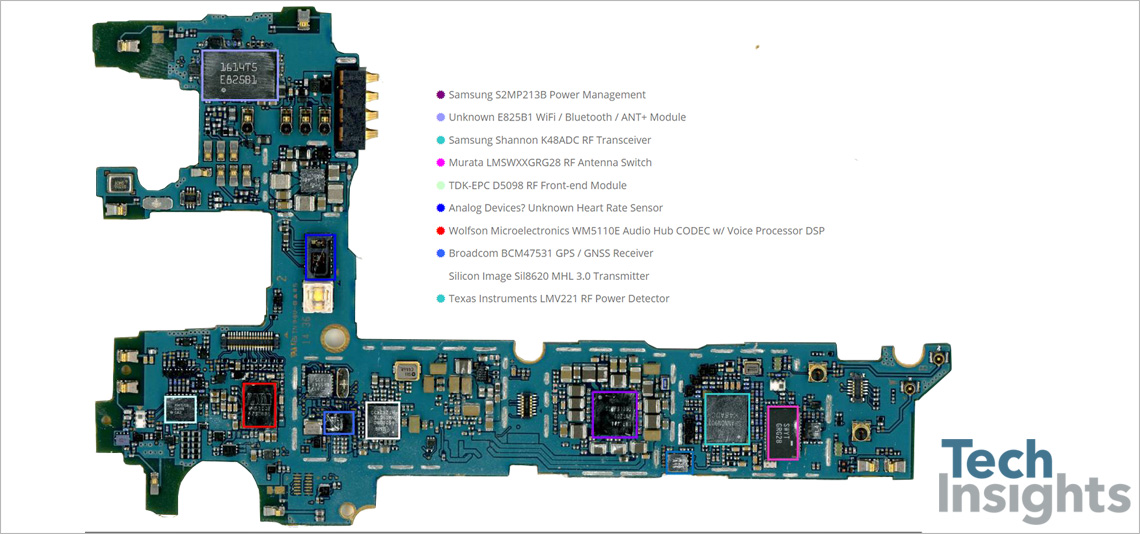
Samsung Galaxy Note 4 Board
Samsung Galaxy Alpha Board Shots
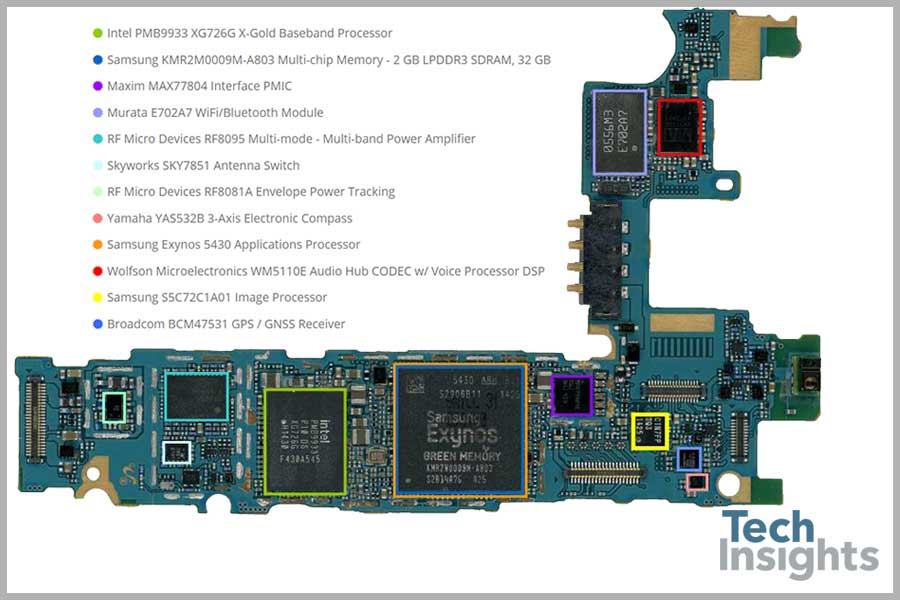
Samsung Galaxy Alpha Board
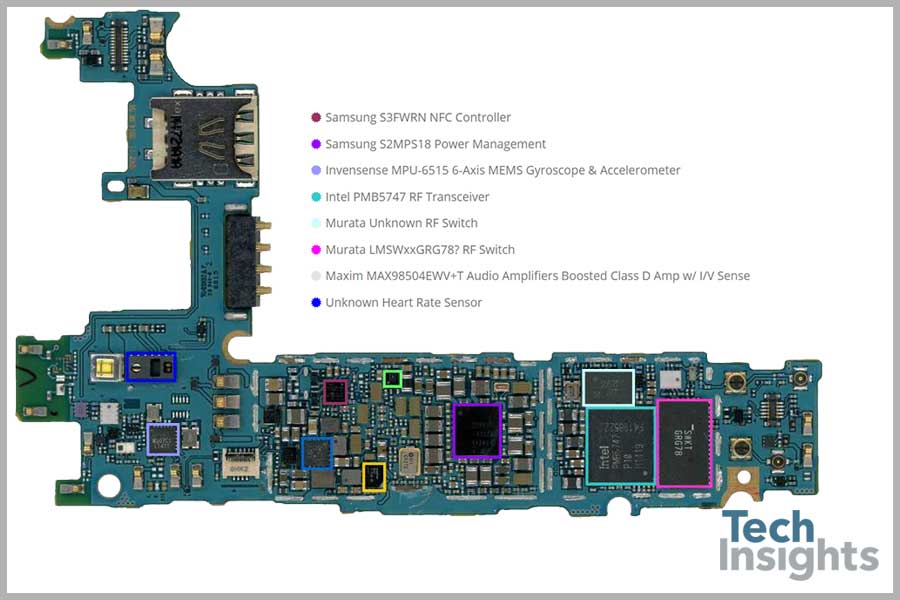
Samsung Galaxy Alpha Board
Cypress Semiconductor Touch Controller in Galaxy Note 4
Cypress Semiconductor takes its usual spot in both devices, supporting the lower two touch buttons. In the Galaxy Note 4 our analyst found the CY8CMBR3155-LQXI capacitive touch controller, part of the Cypress Semiconductor CapSense portfolio.
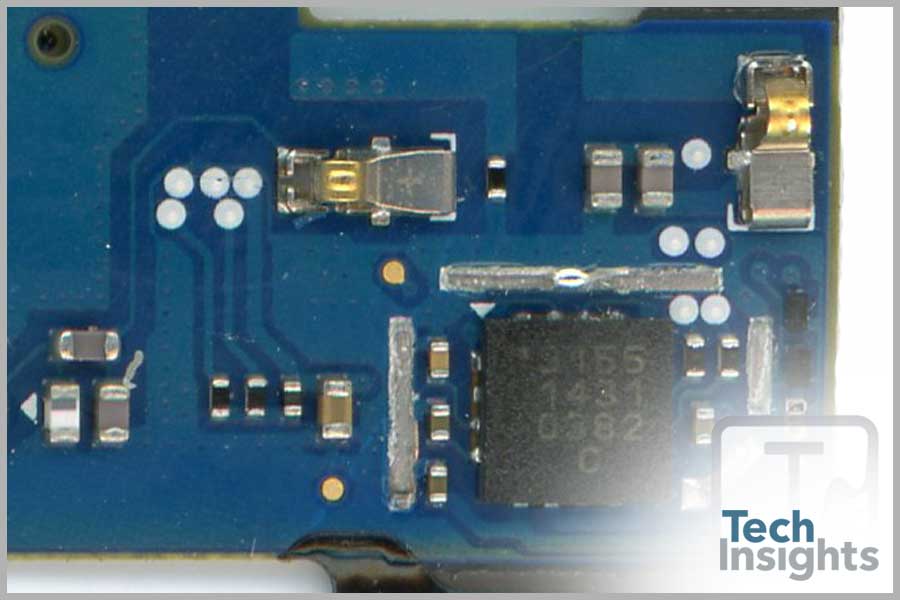
Cypress Semiconductor Touch Controller
Unknown WiFi / Bluetooth Module
It is unknown which manufacturer is supporting the WiFi / Bluetooth / ANT+ features in either the Galaxy Alpha or Galaxy Note 4. Both of the phones have a similar multi-die module found in other Samsung Galaxy S5 phones where the the WiFI / Bluetooth controller ICs were embedded.
Design Win Surprise - STMicroelectronics Touchscreen Controllers
Our analysts found two different STMicroelectronics touchscreen controllers in the Display / Touchscreen subsystems of the Samsung Galaxy Alpha and the Galaxy Note 4. We suspect these are both two-die packages and will confirm it in our Deep Dive analysis of both products in the coming weeks.
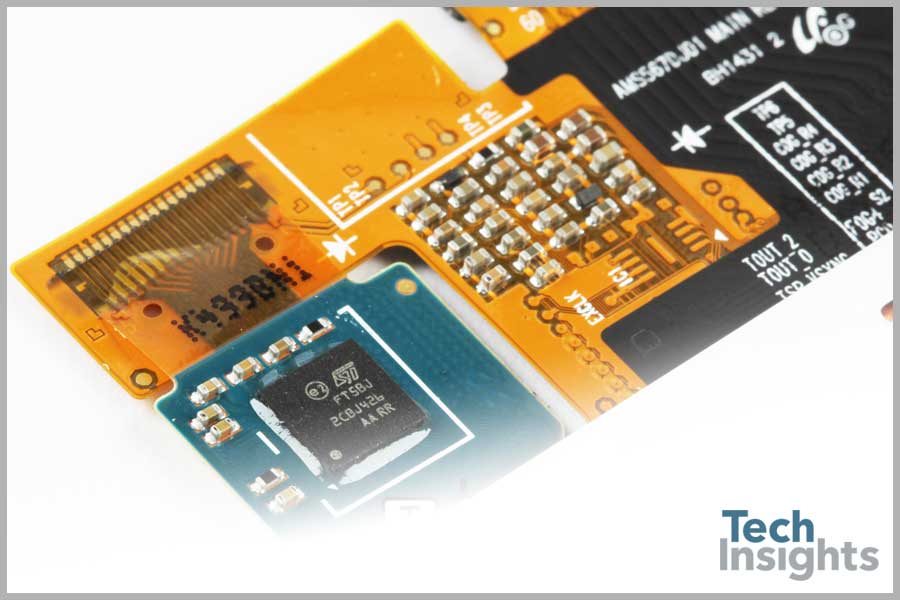
STMicroelectronics Touchscreen Controller
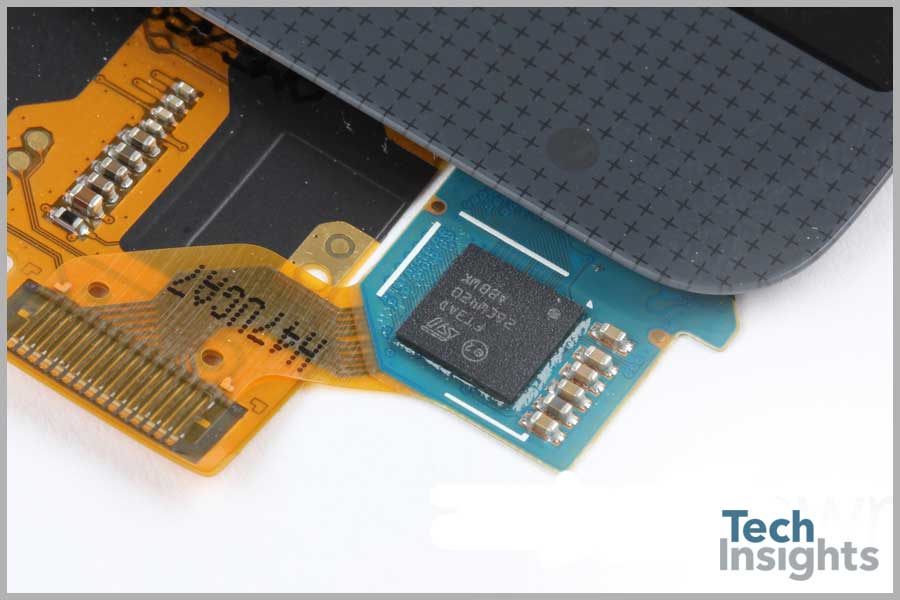
STMicroelectronics Touchscreen Controller
Estimated Costs Comparison of the Galaxy Alpha, iPhone 6, Galaxy Note 4, and the iPhone 6 Plus
All four devices are currently in process for a full Deep Dive analysis. The Apple iPhone 6 and iPhone 6 Plus reports are expected to be completed at the end of October, 2014. The Samsung reports are expected to be available at the beginning of December.
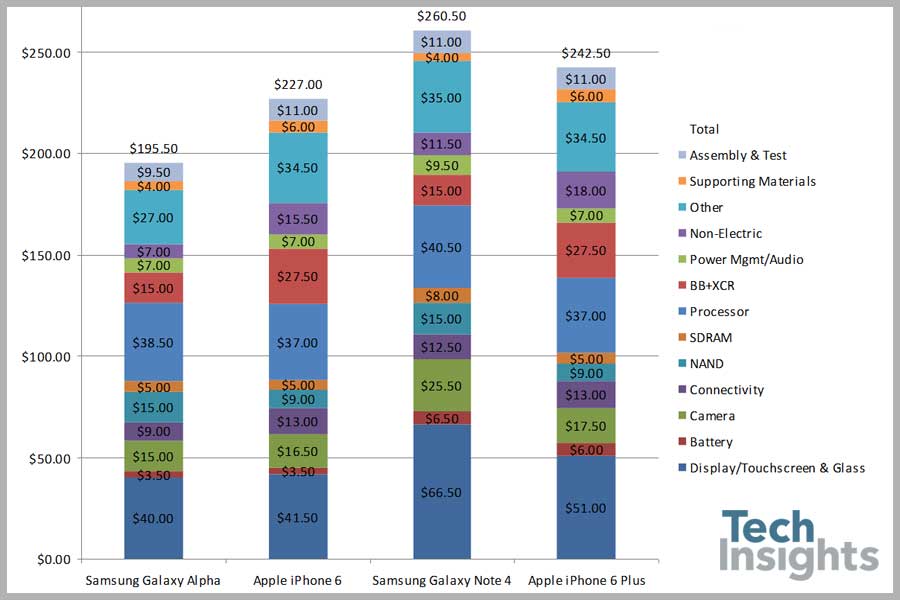
Estimated Costs Comparison
Samsung Galaxy Note 4 & Apple iPhone 6 Plus Display Specifications
The final cost of the Galaxy Note 4 is estimated to be higher than the iPhone 6 Plus. This is greatly due to the higher priced Display / Touchscreen subsystem cost of the Galaxy Note 4. The Super AMOLED display of the Note 4 has a cost premium which increases as the panel size increases. Also impacting the costs of the Note 4 display is higher pixel count.
| Display Type | Diagonal | Pixels | Total Pixel Count | |
|---|---|---|---|---|
| Samsung Galaxy Note 4 | S-AMOLED | 5.7" | 2560 x 1440 | 3,686,400 |
| Apple iPhone 6 Plus | IPS/TFT | 5.5" | 1920 x 1080 | 2,073,600 |
The Takeaways
An initial design win observation of the Galaxy Alpha, Samsung tapped themselves to support applications with the Exynos 5430 with support from their own memory ICs. For envelope power tracking. instead of using the R2AA217C from the reclusive R2 Semiconductor (as they did in the Samsung Galaxy S5 mini), Samsung used the RFMD RF8081A. Other than finding STMicroelectronics supporting the main touchscreen controller function, there were not any significant design changes from other Samsung Galaxy phones. The Galaxy Note 4 did surprise us with the STMicroelectronics touch solution and with the number of ICs from Samsung's Shannon chipset. The Shannon ICs and the number of additional Samsung ICs seen in the Galaxy Note 4 may suggest Samsung is not only hard at work at designing their own total design solution for mobile devices, but they are also willing to use their own designs in their high-end, flagship smartphones.









